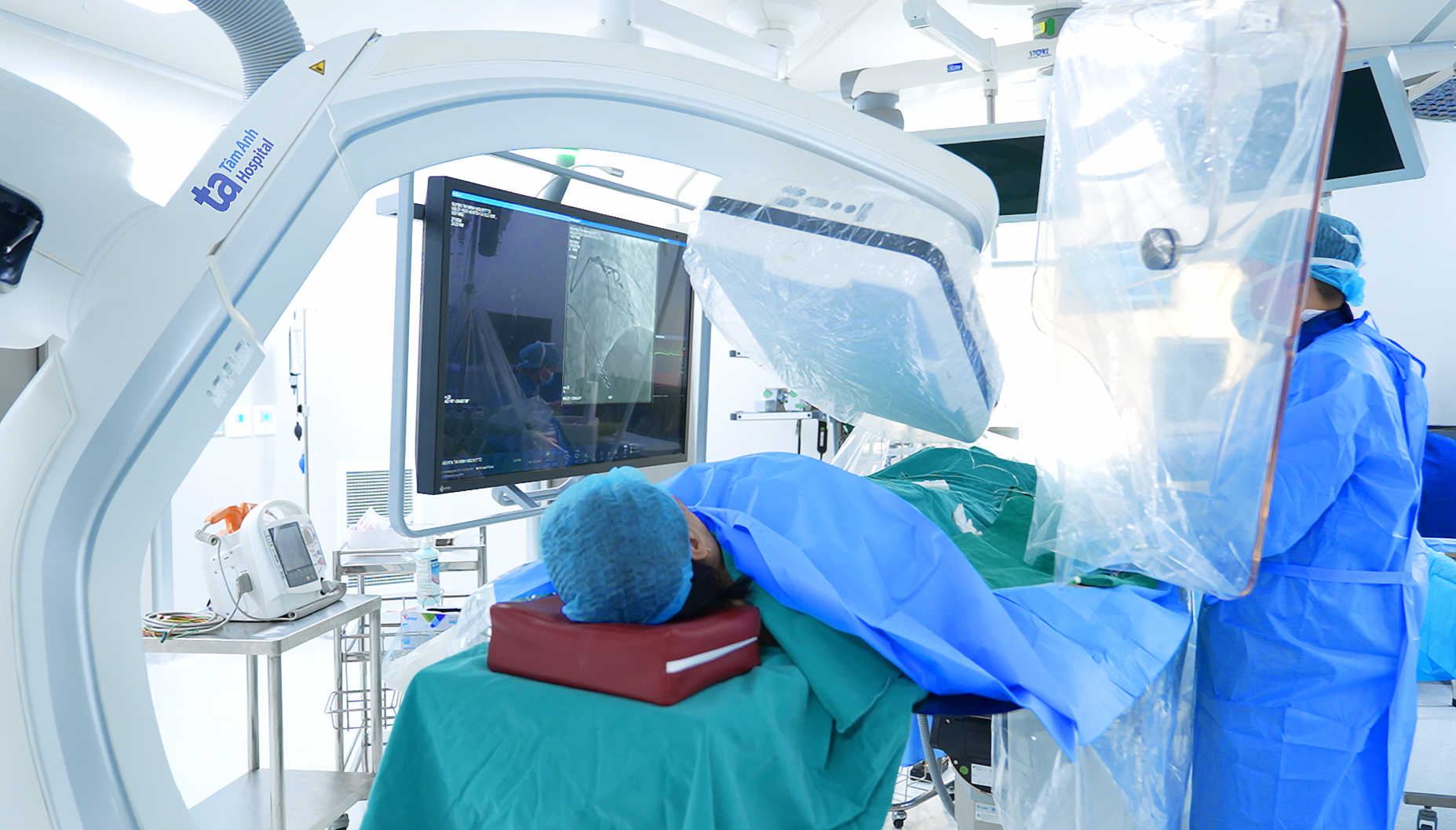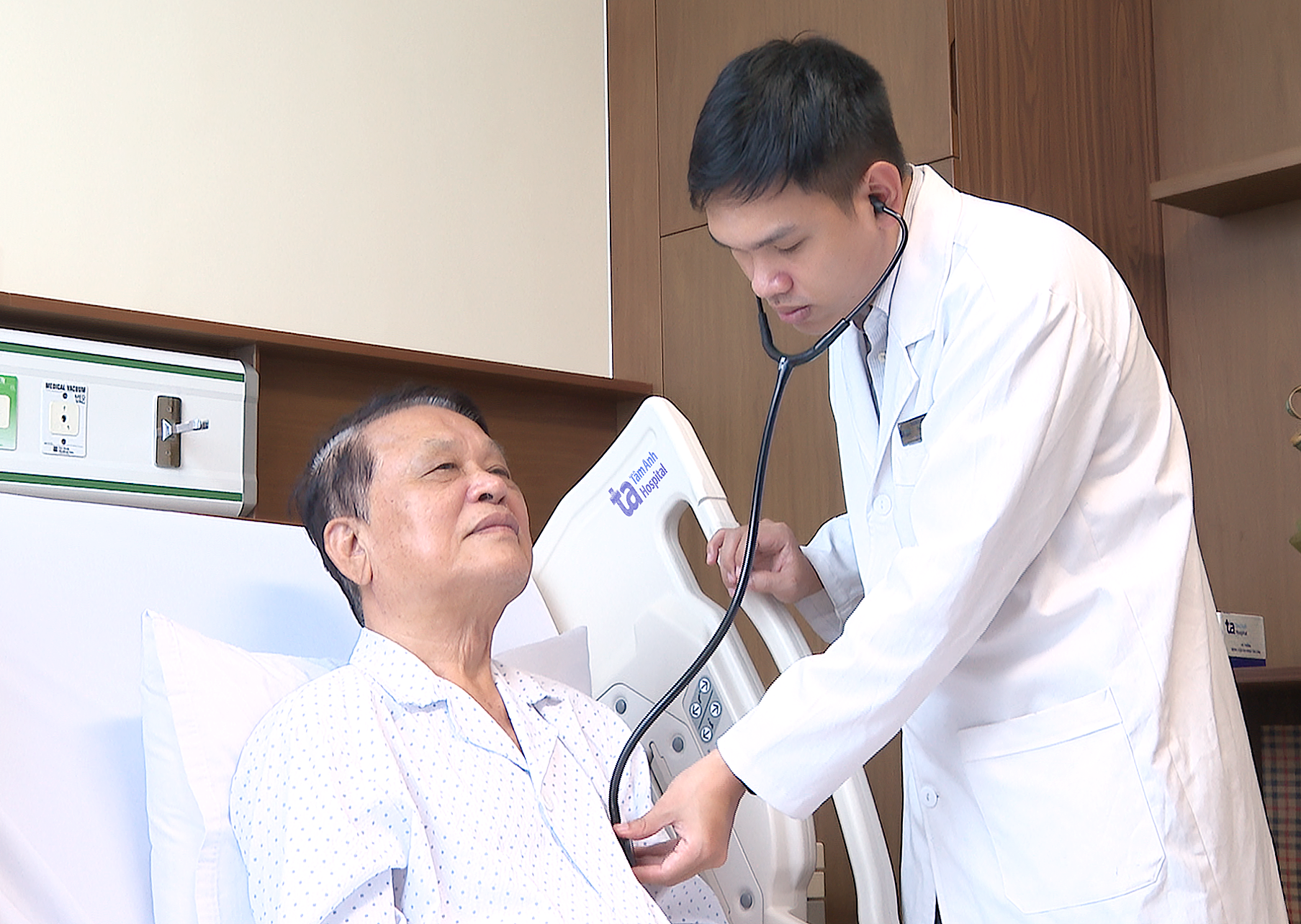During a general health check-up for Mr. Hieu, Dr. Nguyen Hoai Vu, a cardiologist at Tam Anh General Hospital in Hanoi, observed elevated cardiac enzymes, an abnormal electrocardiogram (ECG), impaired heart muscle movement, a reduced ejection fraction (EF) of 40%, and significantly reduced heart function. His right coronary artery was completely blocked due to an acute thrombus, and the other two branches were 85% narrowed.
"This is a case of an acute ST-elevation myocardial infarction (STEMI), requiring emergency revascularization," Dr. Vu said, adding that during the acute phase, the patient had a high risk of arrhythmia and cardiac arrest due to the large thrombus burden. Intervening in multiple coronary arteries simultaneously prolongs the procedure, while acute myocardial infarction often leads to increased blood clotting, raising the risk of serious complications. Therefore, the team divided the intervention into two phases to minimize the risk for the patient.
 |
The team performed an intervention to reopen the coronary artery, saving the patient's life. Photo: Tam Anh General Hospital |
The team performed an intervention to reopen the coronary artery, saving the patient's life. Photo: Tam Anh General Hospital
In the first intervention phase, the thrombus was removed from Mr. Hieu's completely blocked right coronary artery—the direct cause of the acute heart attack—and a stent was placed to restore blood flow. The timely intervention limited further heart muscle damage, and the patient's condition stabilized.
A few days later, once the patient's condition and hemodynamics were stable, the team addressed the remaining blockages in the other coronary artery branches. The doctors used imaging techniques to assess the damage and selected appropriate balloons to dilate the severely narrowed and calcified sections, optimizing the intervention's effectiveness and ensuring patient safety.
After the two stent placements, Mr. Hieu recovered well. His appetite returned, and he no longer experienced chest tightness or shortness of breath during physical activity. He was discharged after 5 days of treatment. Before leaving the hospital, he received advice on diet and exercise appropriate for his heart condition, including avoiding strenuous activity and choosing flat terrain for short periods. He was also instructed on home health monitoring and scheduled follow-up appointments.
 |
Dr. Vu examines the patient after stent placement. Photo: Tam Anh General Hospital |
Dr. Vu examines the patient after stent placement. Photo: Tam Anh General Hospital
Dr. Vu explained that old age and diabetes can mask the typical symptoms of a heart attack, making it difficult for patients to recognize the danger. Individuals 40 and older with risk factors such as diabetes, high blood pressure, dyslipidemia, smoking, lack of exercise, or a family history of heart disease should undergo regular cardiac screenings every 6-12 months. Seemingly minor symptoms in older adults, such as unusual fatigue, mild chest discomfort, and reduced appetite, can be warning signs of heart disease.
Ly Nguyen












